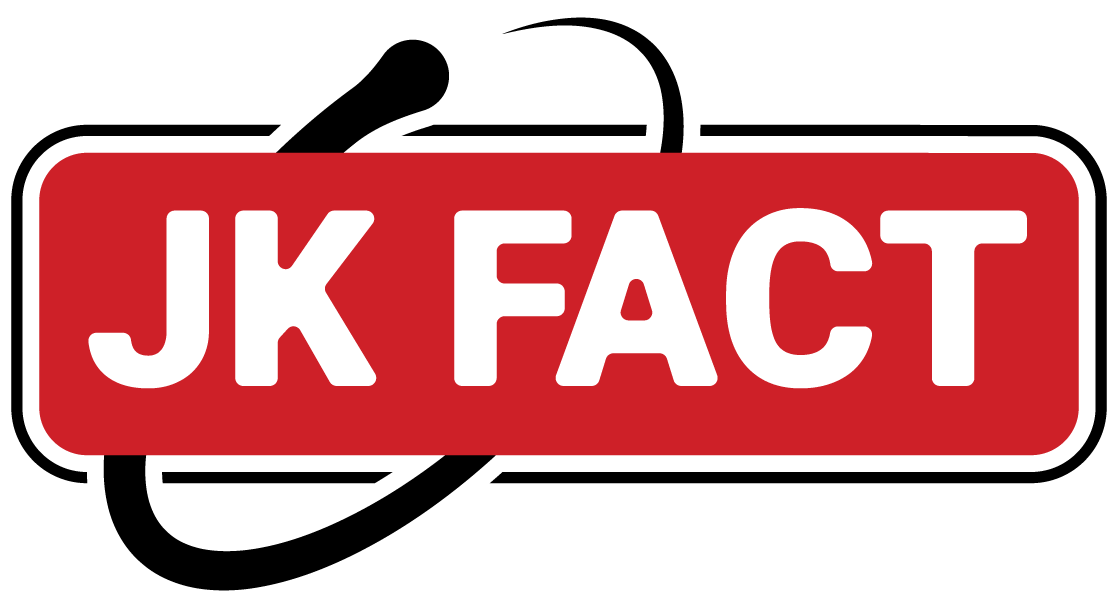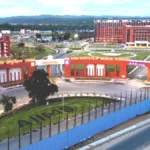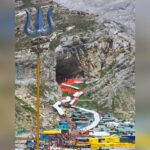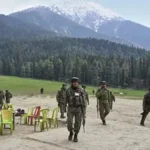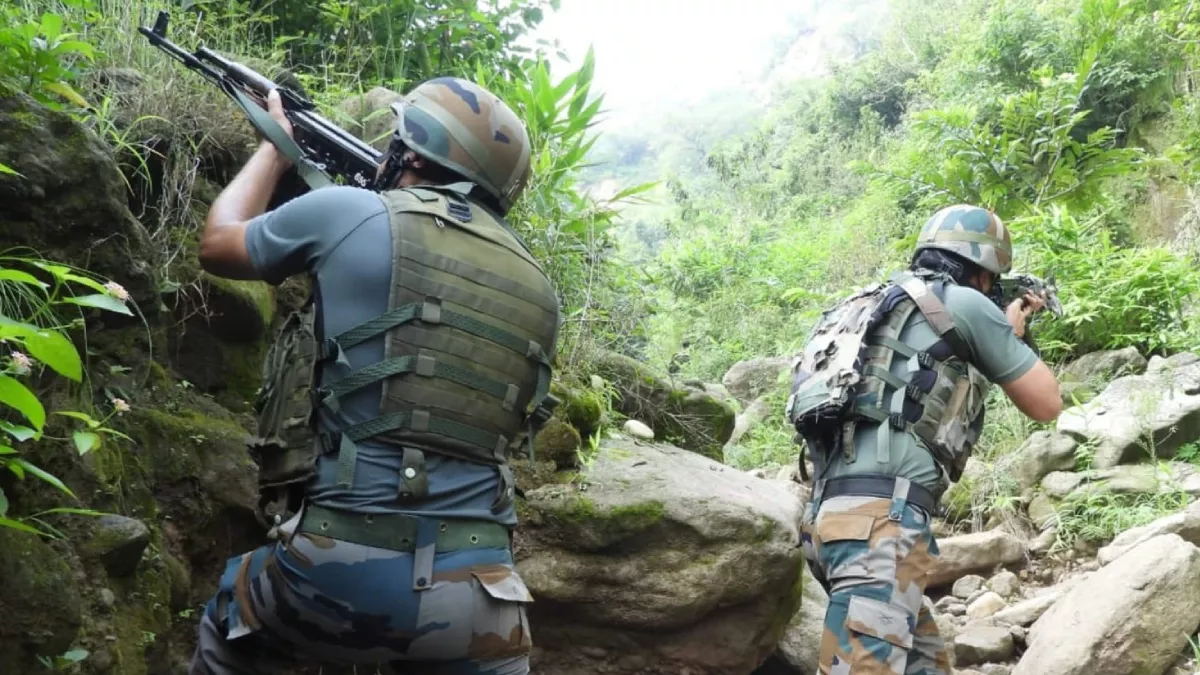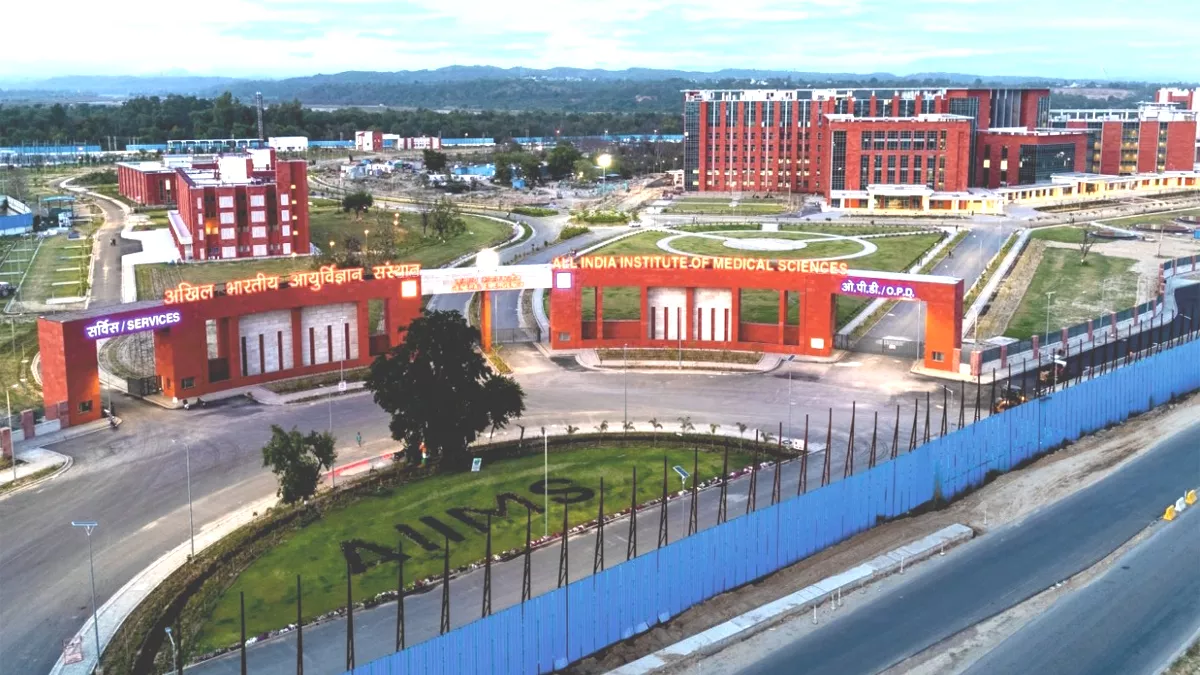
26 years ago, on 19 June 1998, Terrorists attacked a marriage (Baaraat) and killed more than 25 Hindus in Chapnari village of district Doda. A clear attempt of ethnic cleansing of Hindus from erstwhile Doda district.
Erstwhile Doda – Chapnari (Champnari) is situated 10 km from Doda, along the poorly maintained and winding mountain road to Bhagwa. Ever since #Bhagwa was cut off following a landslip early this year, Chapnari has been the last stop for the occasional bus service from Doda.
The more affluent passengers wishing to travel in comfort paid Rs. 15 for a seat on a van owned by an enterprising Doda resident, Vijay Shah at that time in late 90’s.
But after 25 members of a marriage procession were killed there by terrorists on June 19, Shah’s Van was #hijacked by terrorists to carry out their attack and then to escape.
After this Incident, Union Home Minister of that time, L.K. Advani, along with high officials from New Delhi and Srinagar, flew into Doda in three helicopters, he was driven down the road to Chapnari and from there to went to a public meeting at #Prem #Nagar which was organised by BJP Leader Martyred #Anil #Parihar who was killed in Nov 2018 in a terror attack in Kishtwar along with his brother.
L.K Advani was informed that there was no money available for the Village Defence Committees (#VDCs), local self-protection groups armed with obsolete .303 Lee Enfield rifles.
Some of these rifles were so worn out that they had been locally re-bored to use 7.62 mm cartridges. Special Police Officers (SPOs) hired for counter-terrorist work received just Rs. 1,500 a month to risk their lives; from this money they had to pay for food and uniforms. Long-standing demands for troop and police strength upgradation, and for new weapons, vehicles and communications systems, had been forced on ice for want of money.
:- The accounts of the shattered survivors from Chapnari are, unsurprisingly, clear only in their broad contours, and the physical descriptions of the terrorists and their weapons vary considerably in detail. Early on the morning of June 19, #Om #Prakash’s #wedding procession set out from Kadlal village to #Korda, near Prem Nagar, where his #bride Bimla Devi waited. Two sets of newly-weds were with the procession. Khem Raj, Bimla Devi’s brother, had married Om Prakash’s sister Leela Devi at Kadlal a day earlier, and was taking his wife back with him in the traditional doli (Palki). Sesh Ram, Om Prakash and Leela Devi’s brother, and Dugdi Devi whom he had married three days before, also tagged along.
The procession was to have been met by a hired bus at Chapnari from where they were to drive to #PremNagar, the roadhead to Kadlal. All the families were marginal single-crop maize farmers. The new grooms were wearing plastic slippers, and the procession’s sole concession to #wedding ostentation was a small village band.
The procession reached Chapnari at 12-30 p.m. For reasons that are not clear, the hired bus had not arrived, and the group was forced to wait. Most of the men made their way to the two tea-stalls, while the two women waited some distance away along with the doli.
The only other people at the bus stand were three schoolteachers, two Muslim and one Hindu, as well as the tea-stall employees. Three people on a pilgrimage to the shrine at Vaishno Devi, who had travelled with the wedding party up to Chapnari, negotiated with the driver of Shah’s van for a ride to Doda, but were put off by the price he demanded. The van left, only to return a few minutes later. “We only saw it when it took the sharp bend after the tea-stalls,” recalls survivor Janak Raj, “and five armed men got out.”
“There was no time to run. They asked all the baraatis to gather on one side and throw their money, identity cards and other possessions on the ground. They then asked the VDC members to step aside, but though I was one, I did not do so. At that time, we thought they would rob us, perhaps beat us, and then let us go.”
The women at the doli sensed more serious trouble. #LeelaDevi has not spoken more than a few words since the killing, but Dugdi Devi told few reporters and as per information available no internet about the events at the #doli. “One man,” she said, “who looked like a local, came up and asked us to throw our #jewellery on the ground. Then he told us that after they had killed the men they would kill us too. He walked away towards the baraatis, and we readied ourselves to run downhill.” Seconds later, gunfire rang out. “A man with a long beard opened fire first,” says 14-year-old Pishori Lal, who was drafted in as a band member because one of the regular dhol-drum players had fallen ill.
“The gunfire continued for a long time, or at least it seemed like that. They gave no warning before shooting.” The women fled downhill, where they remained until they heard police vehicles and Army trucks arriving at Chapnari half an hour later. Most of the survivors had by that time begun to make their way to the Army camp at Bhagwa, taking the injured with them.
Some speculation has linked the Chapnari killings to the murder of four Muslims at Karara on March 19 by a group of Hindu villagers, with the connivance of a Border Security Force (BSF) picket (‘Blood on the Chenab”, Frontline, April 24). This theory appears implausible for the simple reason that none from Kadlal village were involved in the Karara killings, located some distance away from the roadhead on the opposite side of the river.
Another possible cause is that the VDC in Korda was engaged in exchange of fire with terrorists for three weeks before the Chapnari (Chapnari Massacre in Doda) massacre. One VDC member in adjoining Banol, Paras Ram, was murdered along with his wife Sabhawati Devi. Frustrated by their inability to eliminate resistance at Korda, this theory suggests, the terrorists extracted vengeance at Chapnari (Chapnari Masscrae in Doda). This version of events, however, does not explain why Khem Raj and others travelling with them from Korda were not ambushed on their way to Kadlal.
The most plausible explanation is that the terrorists were simply looking to carry out a communal massacre, and found a soft target. From the van driver’s account it is clear that the terrorists made their way down to the road through the Bijarni nallah 2 km from Chapnari. The bend on the road before the terminus ensured that they remained unseen until the last moment, and the arrival of the van saved them the trouble of walking the distance. However, given the fact that three Army camps surround the area, and patrols are frequent, it is unlikely that the terrorists would have waited for more than a day in the area. This suggests that the group had at least some advance information of the baraat’s travel plans.
At the Prem Nagar public meeting that followed Advani’s visit to Chapnari, Jammu BJP Chief #Daya_Krishan_Kotwal claimed that the killings were intended to “drive out patriots from Doda”.
What he meant by “patriots” was left in no doubt, since banners at the meeting called on Advani to “save Hindus”. BJP Youth Wing Leader #Anil_Parihar justified such rhetoric while speaking to the media, claimed that local MLA Khalid Suhrawardy is trying to create the communal tensions between Hindus and Muslims and we will never let anyone to distrub the peace of Doda and Hindus.
BJP theories have it that the rise of violence in Doda has to do with the withdrawal of Army troops from the region. Deployment data prepared for Advani show that the Army’s current strength of nine battalions is higher than its pre-1996 levels, and down by just two battalions from the election period in 1996-1997. More precipitate reductions have come in other forces.
The personnel levels of the Jammu and Kashmir Armed Police have fallen from one battalion in August 1995 to two companies today. All 6 BSF battalions present in 1996, as well as 10 CRPF companies deployed last year, were pulled out.
Indeed, it is possible to argue that Doda’s security problems are the outcome not just of reduced numbers, but of operational failures as well. The Chapnari belt, for example, was protected by three Army outposts in a 1.5 km triangle. None responded to the fire by launching search operations, a fact for which there has been no official explanation.
One villager who spoke to Advani at Chapnari attributed this to incompetence. He said that the Rashtriya Rifles troopers who replaced Gurkha Rifles personnel this year were simply unfit for the demands of Doda’s high-altitude jungle war.
But the most serious problems of all are political. The #massacres in Doda since 1993 have had two principal objectives. The first has been to underline the presence and power of the terrorists, despite their inability to hit military and political targets in a significant way.
The second, and more important, one has been to #transform Kashmir’s insurgency into a Hindu-Muslim communal confrontation, a prospect which has all-India political consequences. Troops will do little to prevent this objective from transforming itself into a reality.
Among those who #survived Chapnari were the three primary school teachers. The two Muslims among them, not identified for security reasons, successfully begged the terrorists at Chapnarifor the life of their Hindu colleague, Raj Bishan, refusing to leave without him.
